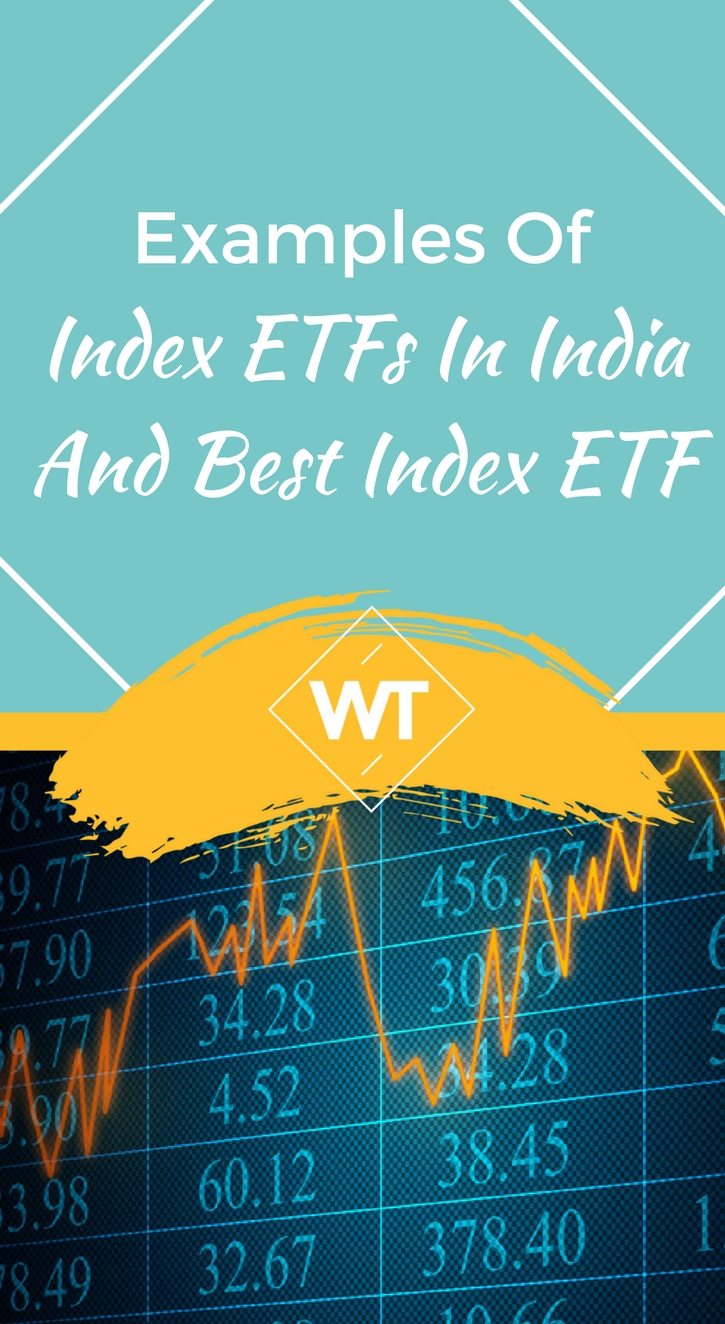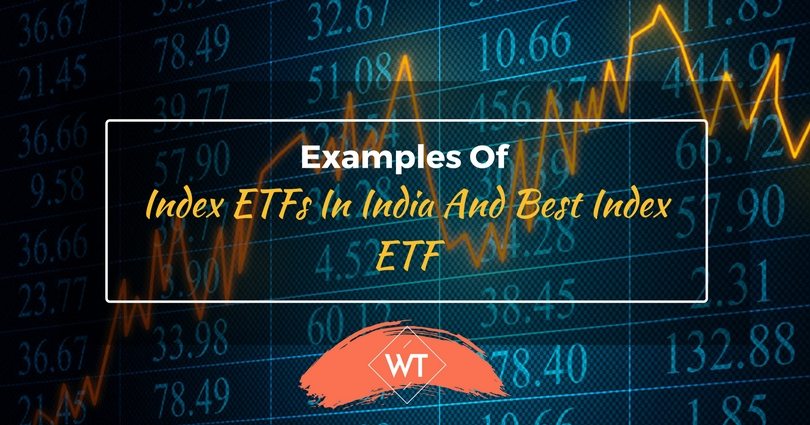Examples of Index ETFs in India and Best Index ETF

Last year, I remember seeing a few ads by a leading telecom service provider in India who also pioneered the 1 paisa per sec tariff. The whole aim of the company in its 1p per sec campaign was to keep things simple. After the success of this campaign, they have recently launched a huge TV campaign with the tag line “Keep it simple” which is aired during commercial breaks on sports channels that broadcast the IPL T 20 matches. Sounds interesting, but the reality is completely different.
I advised Kumar to use the “keep it simple” policy for his personal investments to make his life really simple. Although Kumar was impressed initially he felt it is too good to be true or thought that these might be complex in some way or the other or there might be a ‘catch’.
The catch in case of ETFs is they just mirror an index or asset class and don’t outperform the benchmark. The only other catch I can think of is the liquidity issue that can be associated with few ETFs which have a very small trading volume. Let me reiterate some of the advantages and disadvantages of index ETFs which I discussed with Kumar.
Benefits and Advantages
1. Safety
Investing in index is safer than investing in stocks, because index is a benchmark made up of stocks that are highly liquid and pass a lot of tests and conditions to get included in the index. Index represents growth of the economy and corporates and is not biased towards any company or industry. For instance if you are confident about India’s growth story you should invest in Nifty because it includes 50 leading companies across different industries in India.
2. Low or Medium Risk
There are plenty of risks when you invest in stocks or mutual funds. A company specific or industry specific risk or event can impact a stock dramatically. Say for instance an accident in a factory can impact the price of a manufacturing company’s stock. Index investing through ETF is also risky, but index value cannot dip too low. If this sounds theoretical take the case of scams such as Enron, Satyam, etc and the resultant impact on stock prices.
Index can also get impacted by global events such as Lehman Brother’s crisis and at one point Nifty dipped to 2,500 levels, later Nifty came above 5,800 levels, which is more than double those levels, while the same is not the case with the beaten down stocks. Since Nifty is well diversified the investor only faced market wide risks which are low to medium in intensity.
3. Average Joe’s best friend
An average Joe can simply invest in Nifty and his equity investment is complete in a jiffy. If he can apply some more common sense he can smartly invest more during downfalls, crisis situations and market corrections. This would provide him an opportunity to lower his average holding cost and make gains when the markets run upwards. Any surplus left after investing in index ETF can be deployed in fixed deposits, term insurance, property investment, etc.
If Joe has explored all avenues, and still has a surplus left he can spend it on pursuing a hobby, planning a vacation, donating for charity, setting up a small business, etc. Instead of leading a balanced life many average Joes and smarter people are trying to become star traders or junior Warren Buffets themselves. Remember, that some of the world’s leading investors too have used ETFs to make millions or even billions. So you shouldn’t feel bad about taking a simple no-brainer route when it actually works and delivers good results.
4. Low Cost
Index ETFs have the lowest expense ratio (about 0.50%) and have small annual charges. This make them very cost effective in the long run. In case of mutual funds the costs can some times add up to 4% or more which will dent your returns. The number might look small but over a period of time these costs can eat up your returns.
5. Flexibility
The ticket size is low for index ETFs so you can invest as little as one unit or buy a hundred units or more as per your need. This helps in asset allocation or rebalancing your portfolio when markets go up or go down significantly. Equity is the best asset class but if it delivers superb returns such as 30% per annum or more it is prudent to book some of your profits before the markets nose dive further.
This is where mutual funds disappoint. While markets may be in a bull phase and index is up 10% your fund may be just fetching you lower single digit returns, while some XYZ fund that your cousin bought delivers 22% return p.a. You try to pick another fund and the story is no different. Instead why not invest in India’s growth story by buying the index itself?
6. Transparent Portfolio and Pricing
Mutual funds are well regulated and governed, but their portfolio is disclosed once in a quarter or once a month. Moreover the price of a unit is influenced by factors such as components of the portfolio, fund manger’s performance, overhead costs, etc. Although the costs are lower in index funds, the research costs and expenses could increase dramatically for diversified and other equity funds which employ some of the leading analysts and fund managers with large pay packages and perks.
In case of index funds and index ETFs the portfolio is linked to the index portfolio, which requires minimal research and human intervention. More over pricing is market driven and real time enabling investors to capitalize on intra day price movements. To put it in a nutshell, ETF is like a system which is on auto pilot with minimal human intervention, while mutual fund is dependent on the efficiency of the investing professionals over which you or I have not control.
Disadvantages
1. Liquidity (Ask-Bid Spreads)
This should be ideally minimal, because if you want to buy or sell you should get a rate which is close to the market rate. For instance if Nifty is at 5600 and Ask and Bid rates are Rs.561.50 and Rs.561.90, then it is quite reasonable. However if ask and bid rates are Rs.560 and Rs.565, then there is a huge gap or lack or liquidity or low volumes.
2. Low Volumes
There are some ETFs which have trading volumes in 5 digits and are treaded throughout the day. On the other hand you will find ETFs that are transacting a few hundreds only in a single day. For more current data on ETFs, their prices, trading volumes, etc I would recommend you to visit nse site
3. Low/Moderate Benchmark Returns
This is not a disadvantage per se but an inherent feature of ETF. ETF are just designed to match the benchmark returns and not deliver alpha (excess returns over benchmark). So, investors who expect to make returns above benchmark (Nifty/Sensex) can invest in pure equity funds and hope that their funds will beat the Nifty returns. If the fund does so then it makes sense, else think about seriously changing your investment strategy or approach.
Examples of Index ETFs in India
Given below are some examples of index ETFs in India. The most popular within the ETF universe are Gold and index ETFs. Among index ETFs you have ETFs tracking Nifty, Sensex, Junior Nifty, etc. There are a few sector ETFs such as Reliance, Bank ETF, Bank Bees, PSU Bank Bees, etc. which track the Banking index or the PSU banking index in Nifty.
| Name of the ETF | Asset Management Co. | Benchmark/Index | Unit Pricing |
| Nifty Bees | Benchmark Mutual Fund | S&P CNX Nifty | 1/10th of the S&P CNX Nifty Index value |
| QNifty | Quantum Mutual Fund | S&P CNX Nifty | 1/10th of the S&P CNX Nifty Index value |
| Reliance Bank ETF | Reliance Mutual Fund | CNX Bank Index | 1/10th of the value of the CNX Bank Index |
ETFs are relatively new in India and have been taking some time to gather steam and volumes. However, the large volumes in case of Gold ETFs and Index ETFs proves that investors are indeed becoming aware and knowledgeable about these products and the participation has improved over time. Earlier gold ETF volumes and liquidity was quite low, but today investors want to invest in Gold in addition to the physical gold they possess for ornamental purposes.
Asset allocation was too big a word for small investors because their investment asset size is small. Moreover, the costs involved in managing portfolio of assets meant that only large investors could truly think of diversifying across asset classes. Today, small investors can take a break from their old fashioned methods of picking stocks or funds and simply invest in 2-3 good ETFs and invest the rest in safer avenues. Investment in ETFs should be for medium to long term so that you don’t incur huge charges/fees for frequent churning of investments. Short term trading will be good provided you can comfortably set off trading costs and fees from the profits you make.
In addition to domestic index ETFs, there is a possibility of international index ETFs getting launched in India over time. So far only one international ETF – i.e. Hangseng Bees, which tracks the Hang Seng index has been launched by Benchmark Mutual Fund. Going forward investors may be able to invest in leading indices in the world right here in India. So in future if you have a huge crash or correction in some developed markets which have the potential to recover soon, you can invest using international ETFs and capitalize on the opportunity.
Conclusion
ETFs can cover multiple asset classes and help in asset allocation, but I’m not trying to say that all investing starts and ends with ETFs. If you invest in ETF and still have a surplus left you can deploy it in safer avenues such as fixed deposits, bonds, etc. In cases where you have a sizable surplus you can invest in a property for self-occupation or investment or both, which has the potential to yield capital appreciation as well as rental income.
ETFs can help you save a lot of time, effort and money involved in investing so that your losses can be limited and your additional savings can be put to use in more productive areas rather than trying to repair and maintain your portfolio.
I had a simple advice for Mr. Kumar who was earlier used to picking and monitoring stocks and funds. “Look Kumar, if you use ETFs you are saving precious time, money and effort which you can use for other productive needs”. Kumar argued “What if I spend some time and research to identify multibaggers or top stocks?” I politely responded that rather than investing efforts trying to get 5-10% extra per annum on his stocks, if he takes the ETFs he can spend more effort on his career which can give him 10-50% (salary hike or bonus based on performance), more quality time with spouse, time for children, less paper work, etc. So coming back to where we started “keeping it simple” is going to be the matra when you invest in index ETFs.









Leave a Reply